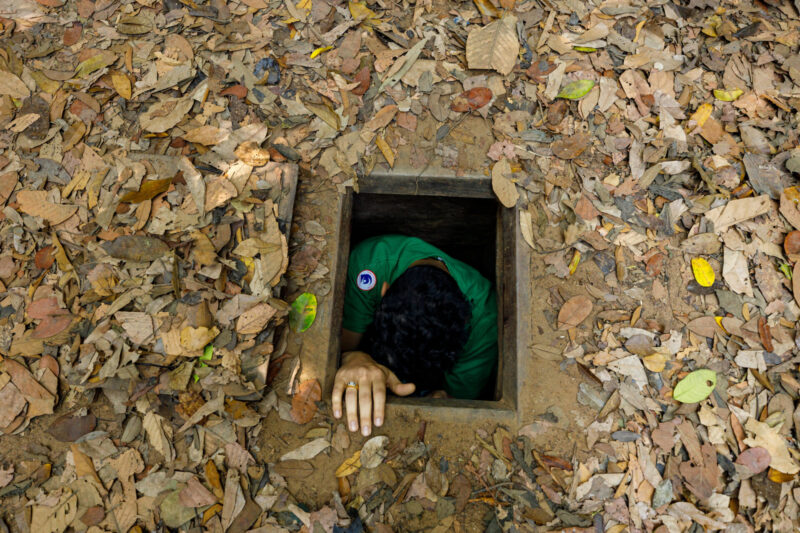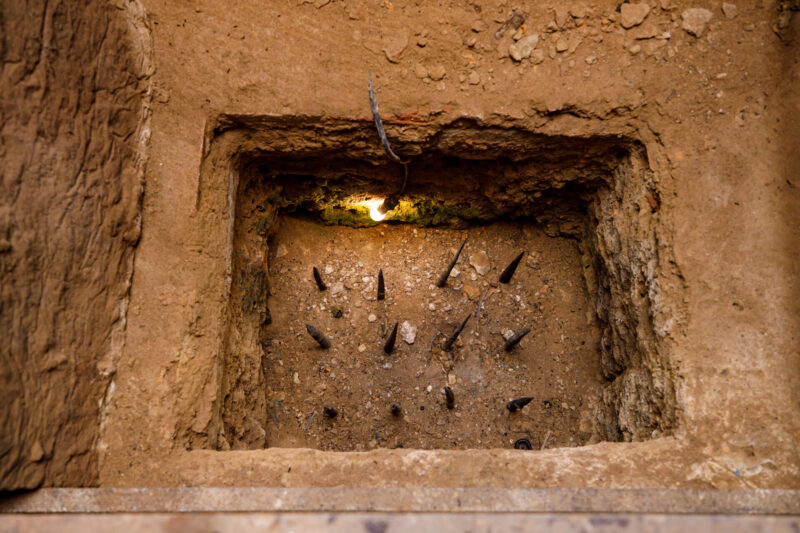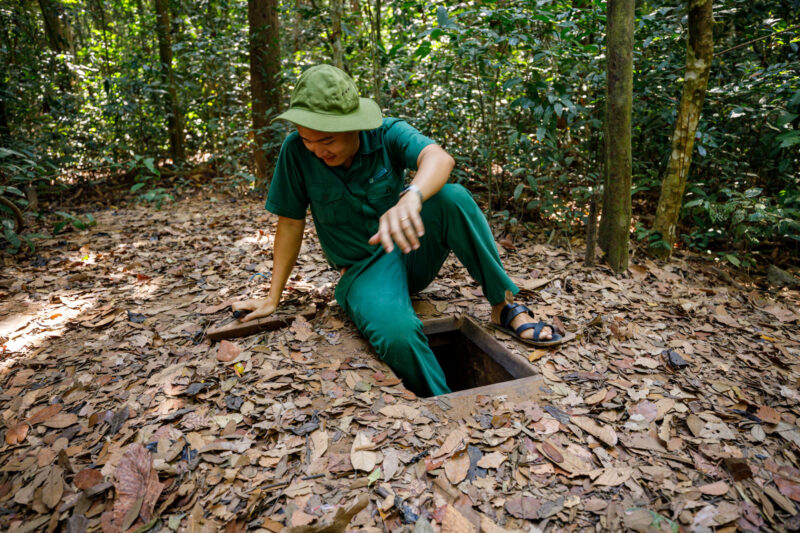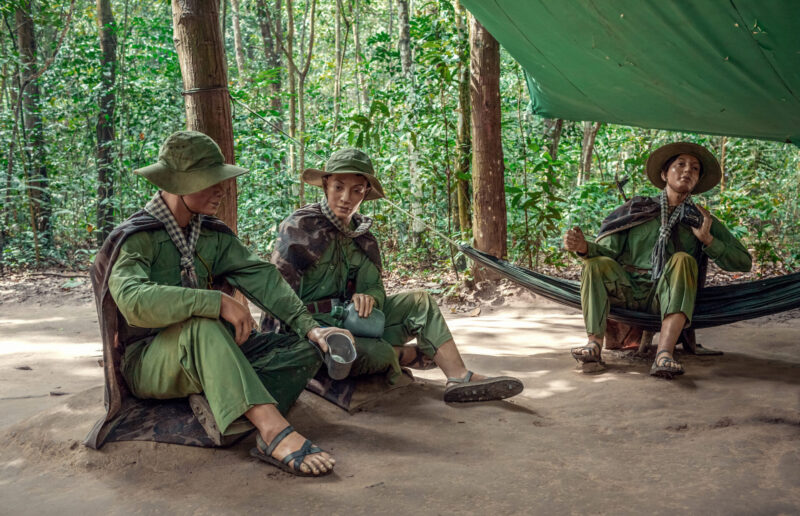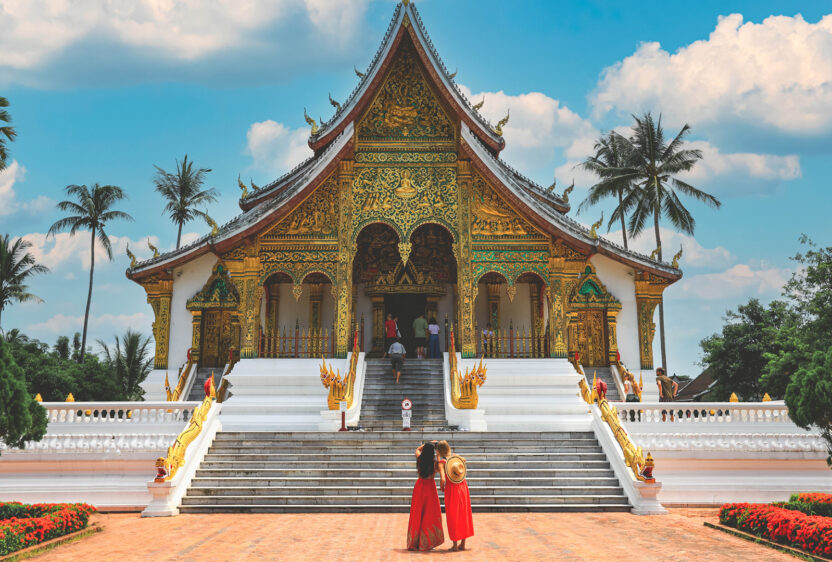It is pitch dark in the tight space, and the walls seem to be closing in even more. The tunnel is narrow, barely enough to move even when bent over. At places there’s only crawling space. The air is dank with the smell of packed earth. It is also very silent, and the sound of shuffling feet and laboured breathing is amplified. But just when the welling panic threatens to bloom into a full-blown attack, a ray of light around the bend ahead comes into view. A few steps more and a hurried scramble up a short ladder leads out into the bright sunshine.
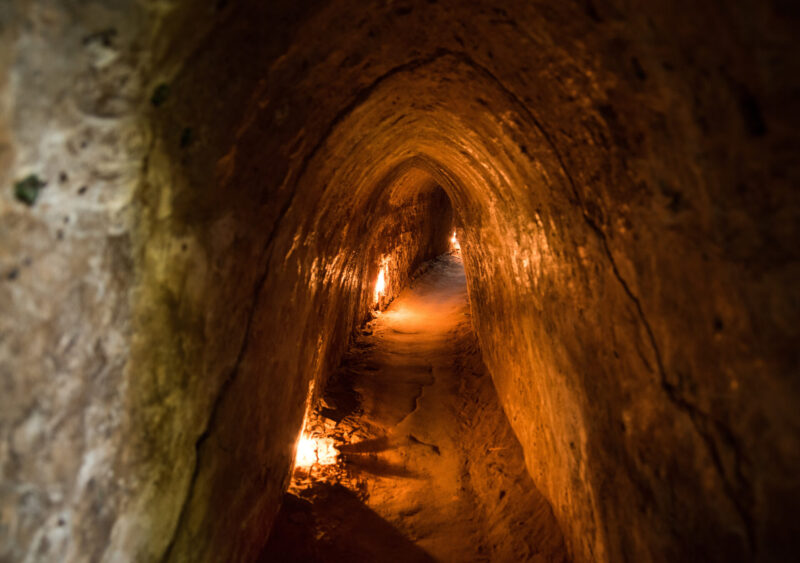
For a few fleeting minutes I experience what it had been like in the Cu Chi tunnels, an underground network dug by the Viet Cong. Located about 50 km south of Ho Chi Minh City, the tunnels – pronounced “ku chi” – were first dug in the 1940s as hiding places against the occupying French forces. Named after the nearby village, they were vastly expanded by the mid-1960s during the American War. At their height, there were 250km of labyrinthine tunnels running underground; one section even audaciously ran beneath the American army base in Cu Chi. It is in these tunnels that the Viet Cong lived and operated for over three decades, confounding the American forces and bringing them to their knees.
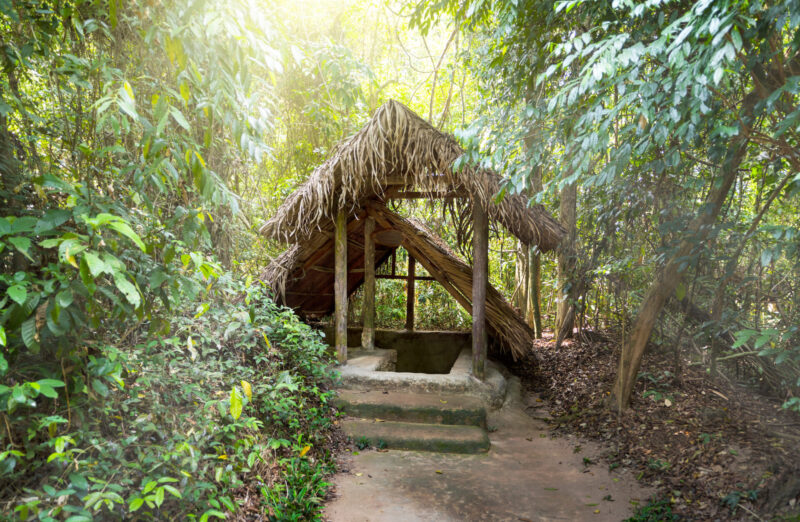
A part of the tunnels in Ben Duoc have been turned into a tourist area. Above the ground, visitors will find a shooting range, vendors selling souvenirs and a war memorial park. Also on display are tanks and weapons, as well as installations that recreate scenes of how Viet Cong soldiers operated. The original tunnels themselves have undergone an upgrade, lit by low-power lights and widened in places for accessibility. They’re still pretty narrow, though. At places they are as tight as 80 cm x 80 cm, just about adequate for Viet Cong fighters but not for American soldiers.




